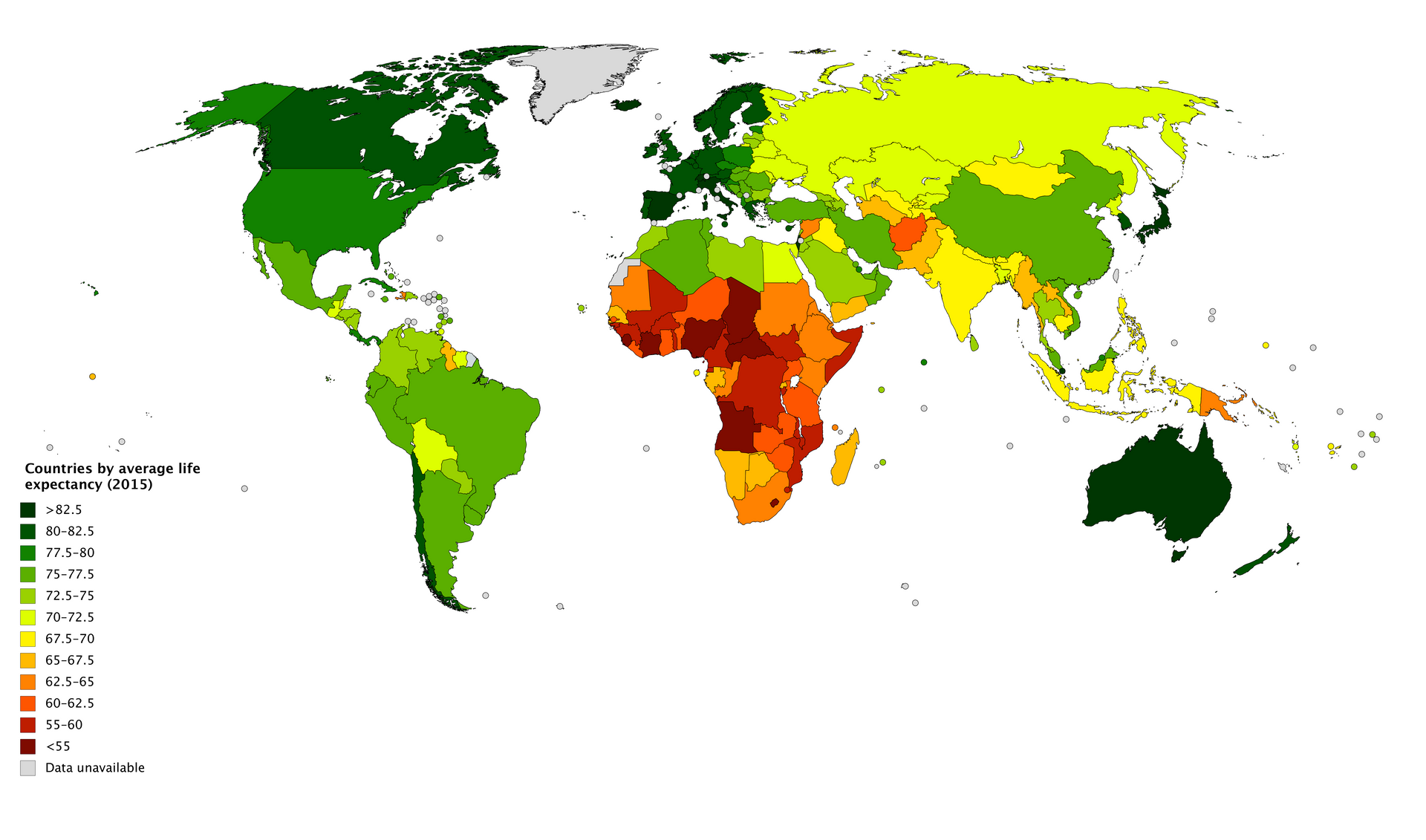Life expectancy in Africa
Why is life expectancy in Africa alarmingly low?

A country's life expectancy is a vital sign of its general health and well-being.
In the past, Africa's life expectancy has not kept pace with other continents. Many African nations had life expectancies under 40 years in the middle of the 20th century, mostly as a result of high newborn mortality rates, infectious diseases, and restricted access to healthcare.
Recent data, however, indicates a notable improvement. Africa's average life expectancy as of 2023 is roughly 64 years, a significant rise over earlier decades. Nonetheless, Nigeria with a life expectancy rate of 56.0 years for women and 52.5 years for men, shows the alarmingly low numbers in certain African countries, still to this day.
Africa's low life expectancy is often viewed as a symptom of broader systemic issues such as poverty, inadequate healthcare infrastructure, social inequality, and political instability.Addressing these root causes is essential for improving life expectancy and promoting well-being in affected countries.
Here are the primary reasons behind the low life expectancy in Africa, shedding light on the multifaceted challenges the continent faces and potential pathways to improvement:
Socio-Economic Factors
- Poverty
High levels of poverty limit access to healthcare, nutritious food, clean water, and education. Poverty also contributes to poor living conditions, increasing the risk of disease.
- Economic Inequality
Wealth disparities mean that even within countries, access to healthcare and other resources is uneven. Rural and marginalised communities often have much lower life expectancies than urban and wealthier areas.
Quality and Access to Healthcare
- Restricted Infrastructure for Healthcare
There are not enough medical facilities in many African nations, especially in rural areas. For a significant section of the population, this restricts their access to necessary health services. There is frequently a lack of medical supplies, equipment, and qualified healthcare workers at hospitals and clinics.
- Exorbitant Medical Costs
For a large segment of the populace, healthcare services remain out of reach in many areas. When medical treatment is expensive out of pocket, people may be discouraged from getting the care they need.
Infectious Diseases
- Malaria
Malaria is endemic in many parts of Africa. While efforts to distribute insecticide-treated bed nets and provide antimalarial medications have helped, the disease continues to cause a high number of deaths, particularly among children. In 2023, Africa was home to 94% of malaria cases (233 million) and 95% (580 000) of malaria deaths. Children under 5 accounted for about 80% of all malaria deaths in the Region.
- Cholera
Over 230,000 cholera cases and 4,000 deaths have been recorded across 14 cholera-affected countries in Eastern and Southern Africa since the beginning of 2023. As of February 2024, 11 countries are reporting active outbreaks, with six countries currently classified by the WHO as in 'acute crisis' for cholera.
Malnutrition and Food Insecurity
- Chronic Malnutrition
Many African countries struggle with high rates of malnutrition, particularly among children. An estimated 20% of the population is undernourished in Africa, with 57 million more people facing hunger since the start of the COVID-19 pandemic.Chronic malnutrition can lead to stunted growth and developmental issues, increasing vulnerability to diseases and reducing life expectancy.
- Food Insecurity
Recurrent droughts, climate change, and conflicts disrupt food production and supply, leading to food shortages and hunger. Poor nutrition weakens the immune system, making people more susceptible to illness.
Education
- Low Educational Attainment
Limited access to education, especially for girls, negatively impacts life expectancy. Education is linked to better health outcomes, as educated individuals are more likely to make informed health decisions and seek medical care when needed.
- Lack of Health Education
Inadequate health education leads to poor health practices and a lack of awareness about disease prevention and treatment. This exacerbates the spread of infectious diseases and poor health outcomes.
Sanitation and Clean Water
- Inadequate Sanitation Facilities
Poor sanitation facilities lead to the spread of waterborne diseases such as cholera and diarrhoea, which can be fatal, especially for young children.
Many communities lack access to proper sanitation, increasing the prevalence of preventable diseases.
- Limited Access to Clean Water
Access to clean and safe drinking water is still a challenge in many parts of Africa. Contaminated water sources are a common cause of disease, affecting overall health and life expectancy.
Numerous interrelated variables contribute to Africa's poor life expectancy. At the municipal, national, and international levels, comprehensive and ongoing efforts are needed to address these issues. Increasing life expectancy requires investments in economic development, peace-building, education, and healthcare infrastructure. African nations can achieve notable progress in promoting healthier and longer-living populations by addressing the underlying factors contributing to low life expectancy.
Hence why we have committed to Africa as one of our targets to make an impact, reduce deprivation and deliver strong reforms, as their age expectancy is alarmingly low.




